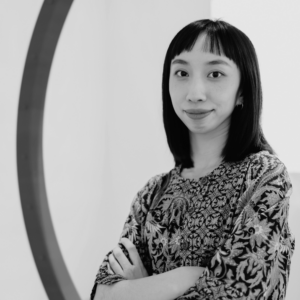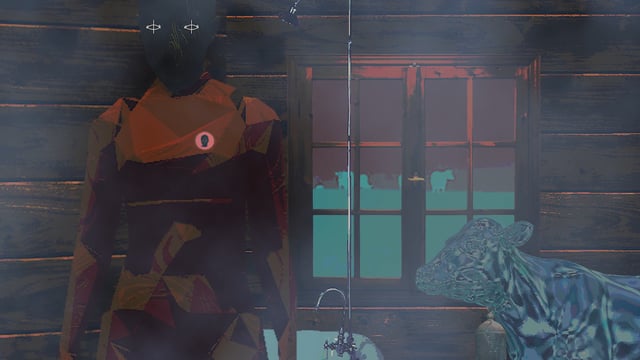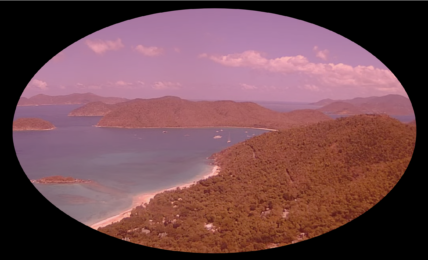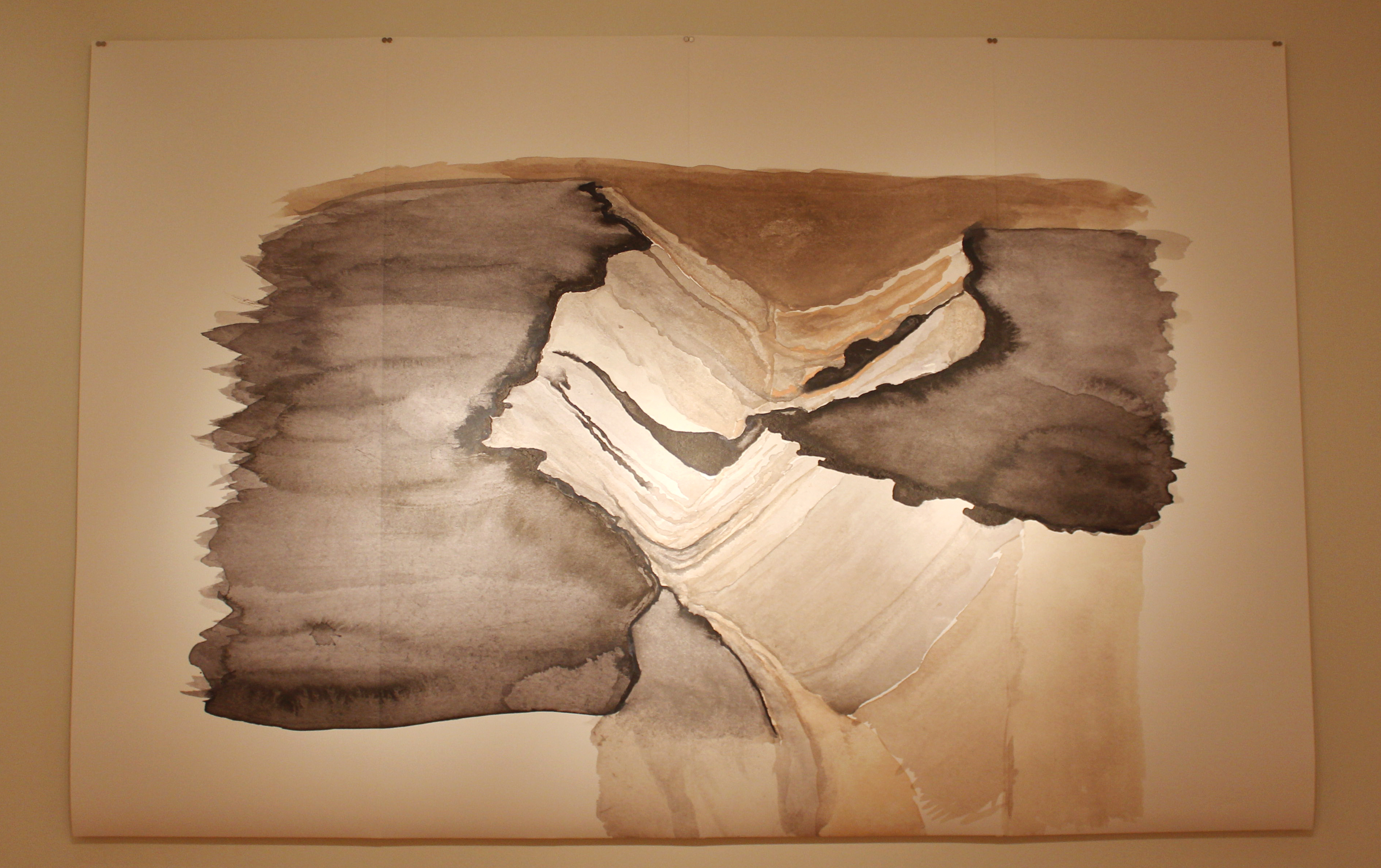Digital America interviewed Yuwen Huang in April of 2025 on her work Wipeout red dots.
:::

:::
Digital America: Wipe out red dots (2023) reflects on the overwhelming notification design of UIs to shape user behavior. This piece perfectly mimics the image of an iPhone screen full of apps. When viewing this piece, I feel anxious about the rapidly appearing dots, yet an urge to keep pressing and interacting. What inspired you to create this piece?
Yuwen Huang: I’m really glad to hear that the piece evoked the exact feeling I hoped to convey. The idea for Wipe Out Red Dots had been with me for quite a while, but I didn’t create the first version until 2022. It came from a moment of realization—I had accumulated over a thousand unread notifications on apps like WeChat and email, and it triggered my OCD. Friends would often joke about wanting to help me “clean the red dots,” which made me think more deeply about their presence.
To me, these red dots act like a kind of digital virus—small, visual signals that symbolize unread messages, advertisements, and notifications. They’re constantly generated, often without our consent, and compel us to take action. Although they’re intangible and virtual, they have a very real emotional impact, especially in a world where the boundary between the digital and physical is increasingly blurred. That tension between anxiety, the urge to interact and curiosity is what I wanted to capture in this work.
DigA: Notification design is nuanced—from alerts to subtle cues. What was your process in exploring notifications, and how did you approach the design of the piece?
YH: Notifications are often tied to messages or advertisements—constant signals that demand our attention. But in this piece, I wanted to hide a clue for the audience within that chaotic stream of digital noise. My idea was quite simple: as the creator behind the interface, I concealed “myself” inside one of the notifications, inviting the viewer to discover me through interaction.
It’s not just about isolating and presenting a familiar scene from everyday life; it’s more like teasing the viewer into a playful search. The atmosphere of the piece is intentionally lighthearted, which sets it apart from some of my other online works.
Overall, I really enjoyed creating a sense of connection through this interface—even though the viewer and I are not in the same place or moment in time, the interaction becomes a shared experience.
DigA: After viewing this piece, I realized, for the first time, the effect that notifications have on me—my immediate reaction to a red dot or a pop-up on the screen distracts me from the present moment. How do you see notifications—and attention culture more generally—influence or impact contemporary digital art?
YH: Thanks for bringing up the topic on “attention culture”. Drawing from traditional Chinese cultural perspectives, we are currently in the Ninth Cycle, known as the “Li Fire” period—an era associated with the dominance of the eyes and vision. In this age, attention is increasingly treated as a scarce and highly valued commodity, especially as digital life consumes much of our time. Online shopping, short-form videos, and pervasive advertising all compete to capture and monetize our attention.
While the accessibility of digital platforms can certainly broaden the reach of art, the virtual world primarily relies on visual and auditory senses. The resulting information overload makes it easier for our attention to become scattered, posing a challenge for digital artists. At the same time, this challenge can inspire new artistic forms that aim to reclaim or refocus attention, or push artists to explore more compelling visual expressions.
However, I believe contemporary digital art is not only a form of visual communication—it can also serve as a tool to reveal deeper systems and relationships. This requires a more conscious and intentional control over our attention.
For me personally, notifications symbolize a deeper psychological experience: the urge to respond, the fear of missing out, or the satisfaction of “clearing” things. These emotional reactions can become material for creative exploration. Digital art today doesn’t just exist online—it actively engages with the behaviors, emotions, and environments of our time. In that sense, attention culture is not just a challenge; it’s also a key element of the artistic landscape.
DigA: Your most recent piece In-Circle Series (2024) is an interactive website and exhibit that aims to unite people under the belief that we are all artists. This feels like a great example of how the digital world can create an accessible and safe community. This is a great contrast Wipe out red dots (2023) as phones are often designed to keep a user interacting, and can result in isolation from others. How do you approach your work from these varying viewpoints?
YH: That’s a very insightful way of looking at the relationship between In-Circle Series and Wipe out red dots, and I appreciate you highlighting that contrast—how digital spaces can both foster community and, at the same time, lead to isolation.
My approach to these seemingly opposing viewpoints comes from the nature of digital tools and how they shape our everyday experiences. I didn’t consciously set out to create a direct contrast between the two pieces, but I really value your interpretation. It helps me see how they speak to each other in new ways. Wipe out red dots was sparked by something simple—tapping on notifications. That small, repetitive action is often annoying, but there’s also a strange sense of satisfaction or relief in it. The piece reflects on how these constant interruptions mirror deeper emotional cycles of overload and distraction. In-Circle Series, on the other hand, includes two interactive websites that explore the paradox of digital space: it can feel open and accessible, yet still function as a kind of closed circle. Through collective authorship and blockchain technology, the work invites anyone to participate and define what it means to be an artist—challenging the usual gatekeeping in art spaces while still acknowledging that digital environments have their own limitations and structures. As an artist, I see my role as revealing these contradictions, tensions, and even the strange sense of satisfaction that comes from using digital tools. I’m interested in asking how we might use technology—imagine more inclusive and empowering ways of being together. Through my work, I hope to foster critical engagement with the tools and platforms that increasingly shape our everyday lives.
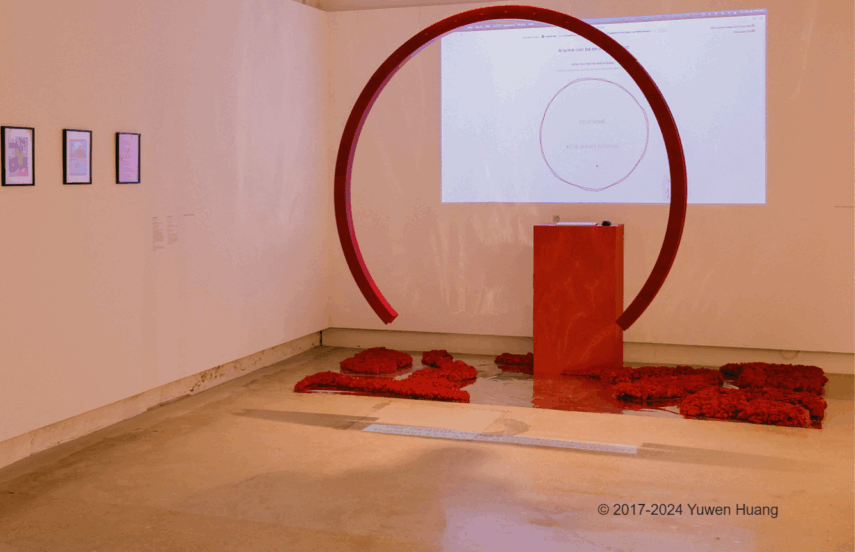
YH: My media art practice has been constantly evolving—my interests, ideas, and understanding of the field have all grown and shifted over time. I’ve never really felt tied to a fixed medium; instead, I tend to choose the medium that best fits the questions I’m exploring at a given moment.
:::
Check out Yuwen Huang’s work Wipeout red dots.
:::
